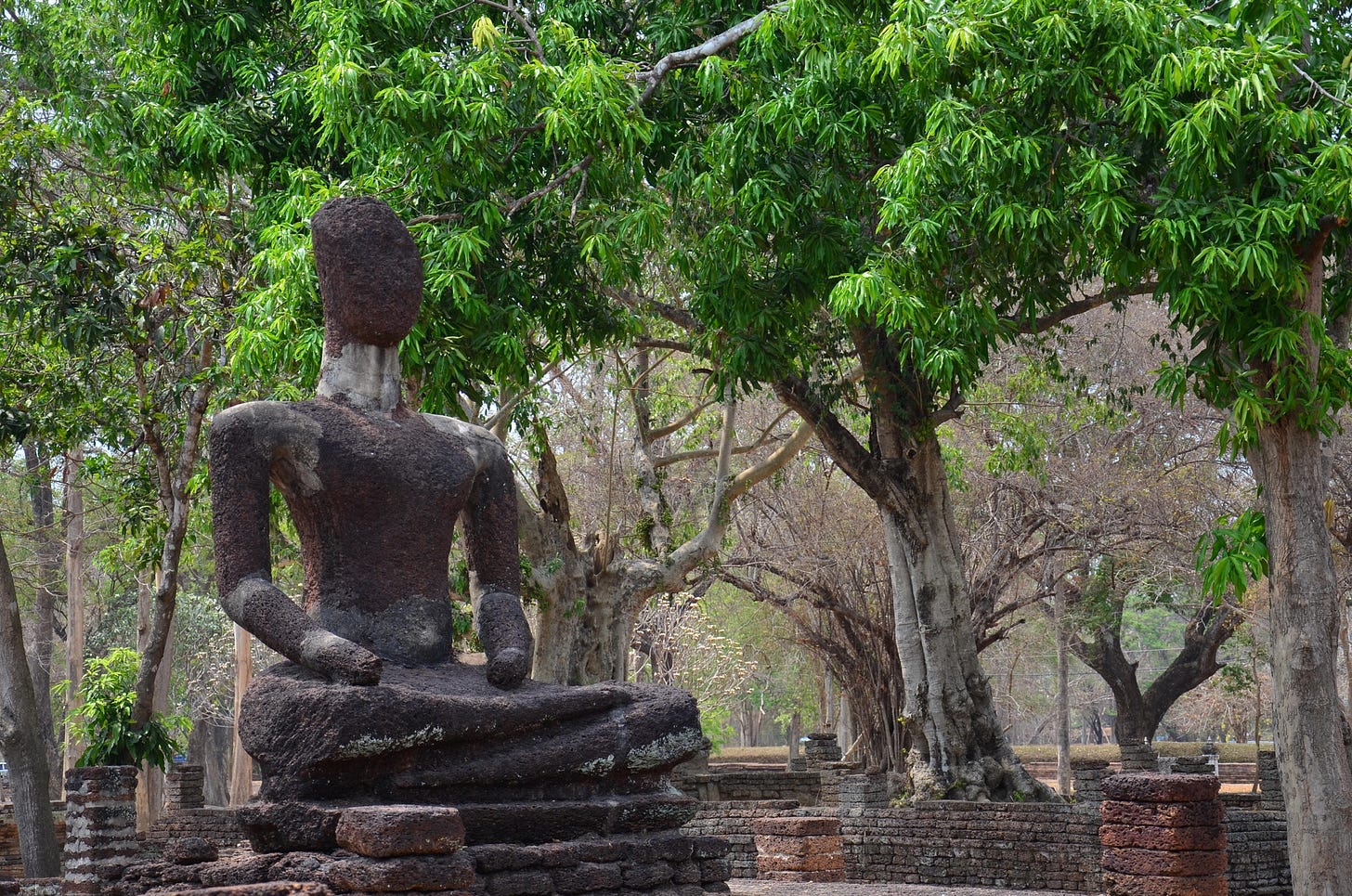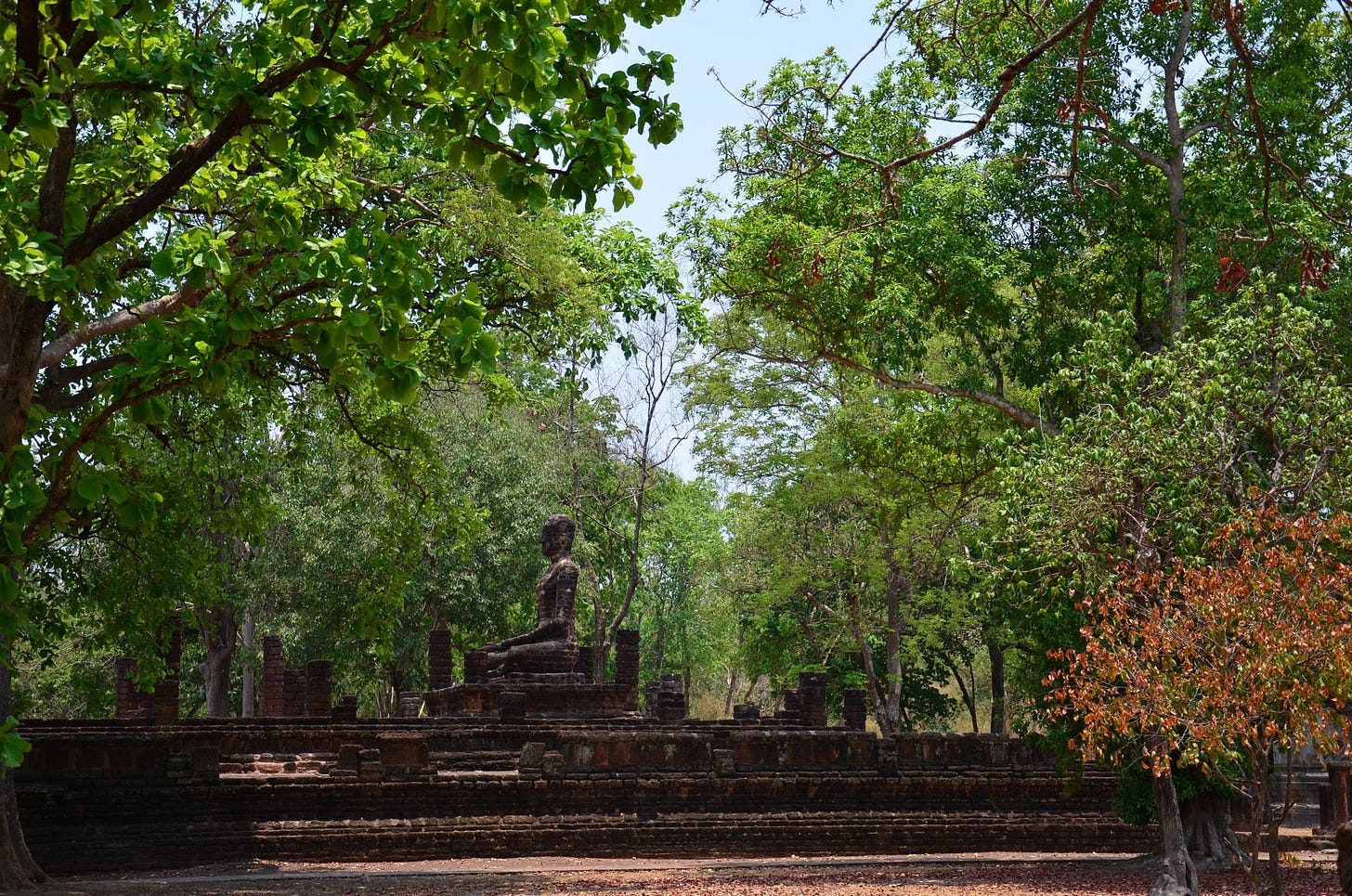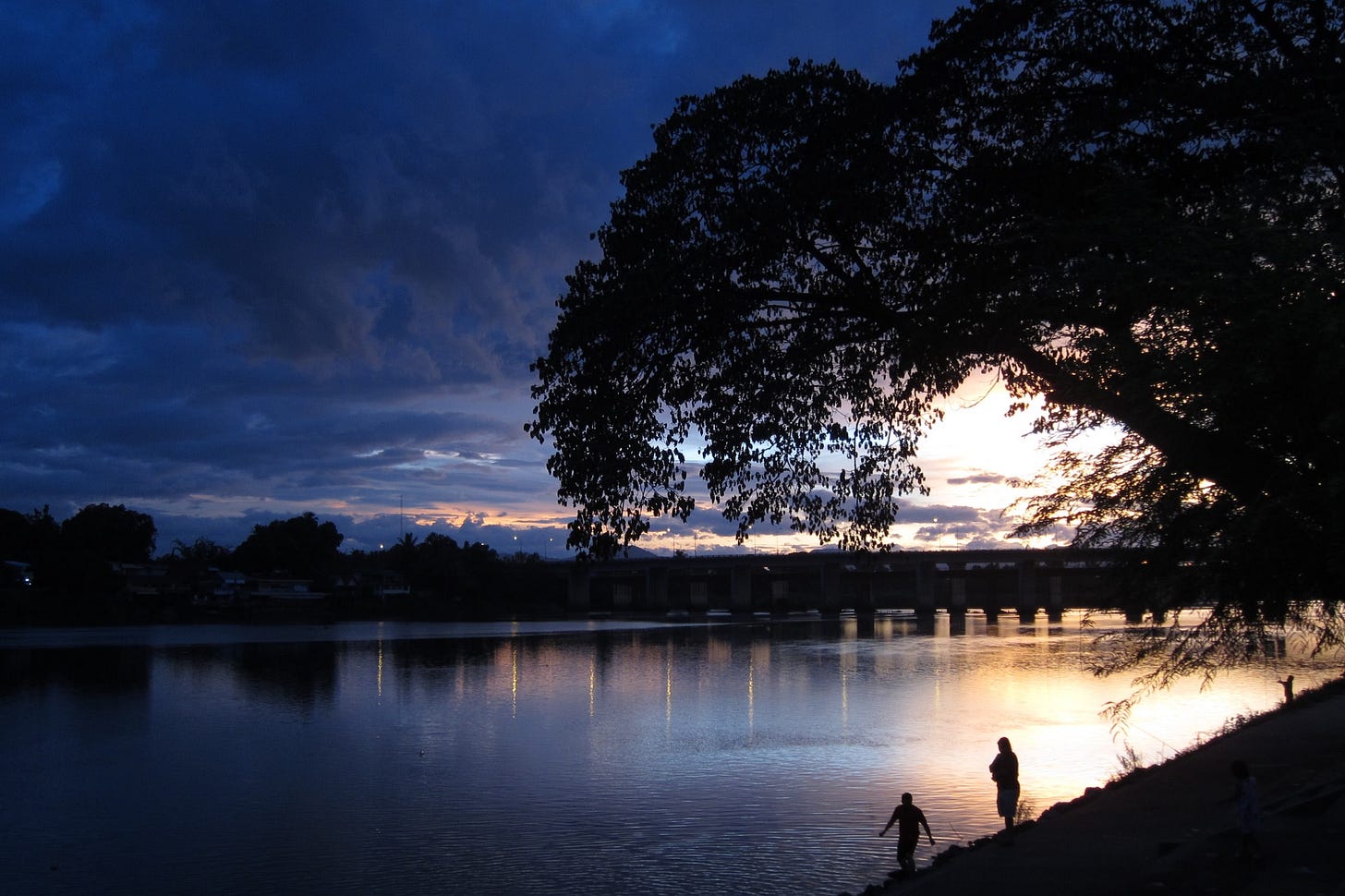Couchfish Day 9: Kamphaeng Phet
Emancipated aliens in a forested historical park
When travellers think of ancient Thai ruins, Ayutthaya and Sukhothai are likely foremost in their minds. Both are outstanding sites worthy of an itinerary, but another merits inclusion: Kamphaeng Phet.
Eerie seated Buddha at Wat Phra Kaew. Photo: David Luekens.
Unlike Sukhothai to the north, Kamphaeng Phet was never a capital city. Instead it was a defensive position (its name translates as “Diamond Wall”) during the Sukhothai period. Despite not ever being a capital, it has an excellent historical park—which is where I’ll start my day.
That is, after breakfast.
Enjoying Couchfish? Know a traveller stranded on their couch? Gift them a subscription!
Kamphaeng Phet is famous for its khao niao bing. Heat sticky rice with coconut milk, then mix in something sweet like banana or sweet black beans. Last step: wrap it in a banana leaf and grill. I ride to the morning market on my bicycle from Three J Guesthouse and grab three, plus a coffee. Now I am ready to go.
I’ve been to Kamphaeng Phet four times over the years and never fail to find something new. The Historical Park is split into two parts—Central and North—both are easy to reach by bike.
Meditative at Wat Singh. Photo: David Luekens.
The downtown section includes Wat Phra Kaew and Wat Phra That. While the latter draws attention with a large chedi, it’s the former that is more memorable. Buddhas so eroded that they show their laterite core bring emancipated aliens to mind. Light traffic is only metres away, yet it feels other-worldly.
Nearby is the Kamphaeng Phet National Museum, where I lose an hour catching up on all things Kamphaeng Phet. I also pause for Ruan Thai Museum next door—the beautiful golden teak building delights.
Is it lunch time already? How did that happen?
I know I was going on about ba-mee moo daeng just yesterday, but Kamphaeng Phet delivers a cracker. Ba-mii Chakungrao is a hole-in-the-wall spot down near the river. Bowls are just 30 baht a piece, but they’re small—so I have two. You only live once right?
Back onto my bicycle, I ride north to the larger Northern Zone of the park. Unlike where I was in the morning, this is more park–like, as it isn’t mixed in with the rest of the city. On almost every occasion I’ve visited, I’ve been just about the only person here.
What more do you need? Photo: David Luekens.
Some 40 sites are spread around the forested park, with smooth paths ideal for cycling tying them all together. While little remains of some monuments, some rival what I saw in Ayutthaya. I stop to admire Wat Phra Non, Wat Phra Si Ariyabot with its six-metre-tall Buddha, and Wat Chang Rob with its 68 elephants.
A large part of the attraction though is the meditative peacefulness. Aside from birdsong and the squeaking wheels on my bicycle, it is silent. I regret stuffing my face in town—I should have brought takeaway for a picnic lunch in the shade beside a 14th century ruin. Next time.
If Buddha naps, I nap. Photo: Stuart McDonald.
While I could take in the main monuments in just a couple of hours, I linger. I take a snooze on a grassy section of lawn and wake to see the sun low. I ride back past what I’ve already seen and the late light delivers a different beauty to the midday glare. Shadows lengthen, sunlight caresses the monuments.
I coast back towards town, sinking sun on my back. I ride over to the west bank of the Ping River—the “other” side of town. There I pick a riverside joint and make myself comfortable on their wooden deck overlooking the river. Kamphaeng Phet has a large Chang brewery, and the iced beer complements my duck salad and massaman curry perfectly.
Late light by the Ping River. Photo: David Luekens.
Back at Three J Guesthouse, Mr Charin promises to give me the skinny for tomorrow: visiting Khlong Lan National Park.






you do bring back long time memories!!!
Stuart, these stories are great. In a time of covid-19 stay-at-home, they are the next best thing to being there!